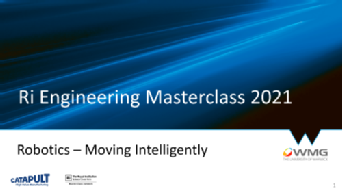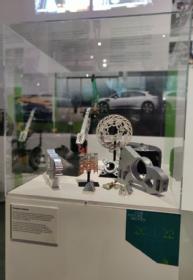Departmental news
Aircraft engine noise pollution to be reduced thanks to novel maths of aero-acoustic simulations
- With ever-stricter noise regulations, aircraft and engine manufacturers are on a mission to reduce noise pollution from aircraft engines
- Novel aero-acoustic simulations that could be used to optimise the design of an aircraft engine and reduce noise will be made possible by Dr Ed Brambley from the University of Warwick
- Thanks to a £290,000 EPSRC grant, the work could revolutionise the way simulations are used in industry, with potential applications not only for aircraft noise but also in meteorology and weather forecasting
Computer simulations are used every day in engineering; however, Dr Ed Brambley will be looking at the maths behind the next generation of novel simulations, which can be used to reduce aircraft engine noise, thanks to a grant from the EPSRC.
Aircraft engines are loud (about 1000x louder than a pneumatic drill), and so designing aircraft engines and airplanes that are able to meet ever stricter noise regulations, whilst still being fuel efficient and cost effective, is a major challenge for aircraft and engine manufacturers.
However, thanks to a £290,000 grant from the EPSRC, Dr Ed Brambley, from WMG and the Department of Maths at the University of Warwick, will investigate the maths behind how computer simulations can be used to minimise the noise from aircraft engines, therefore reducing noise pollution.
Two numerical techniques specific to this project are called Finite Elements and Finite Differences. Both have their advantages and disadvantages: Finite Elements are often used to simulate solids, such as how bridges support weight, whereas Finite Differences are more commonly used to simulate waves, such as the sound produced by aircraft engines. Dr Ed Brambley noticed that the maths of some rather niche Finite Differences behaves rather like Finite Elements, and this funding will allow him to look at why, and how this can be used to make better simulations.
 Dr Ed Brambley, from WMG and the Department of Maths at the University of Warwick explains:
Dr Ed Brambley, from WMG and the Department of Maths at the University of Warwick explains:
“Numerical simulations of aircraft engine noise are used to optimise the design of an aircraft or engine before it is built and tested, but they can take weeks to run even on supercomputers. Companies such as Airbus, Boeing, and Rolls-Royce are interested in how best to simulate aircraft engine noise quickly, so they can compare different designs and better optimise them. I hope that this research will help them achieve this.”
Whilst simulations of sound in aircraft engines (Computational AeroAcoustics) is one of the applications in mind with this proposed research, the research could also have impact well beyond aircraft engine noise, as it addresses concerns about the fundamentals of numerical simulations, and has the potential to impact meteorology and weather forecasting, geophysics and the modelling of earthquakes and the structure of the earth, medical imaging scans, and anywhere else finite differences are commonly used.
ENDS
9TH NOVEMBER 2021
NOTES TO EDITORS
https://warwick.ac.uk/services/communications/medialibrary/images/september_2021/ed_brambley.jpg
Caption: Dr Ed Brambley, WMG/Maths University of Warwick
Credit: WMG, University of Warwick
For further information contact:
Alice Scott
Media Relations Manager – Science
University of Warwick
Tel: +44 (0) 7920531221
E-mail: alice.j.scott@warwick.ac.uk
Inspiring young engineers with STEM masterclasses
The WMG Outreach Team has successfully completed another series of Royal Institution Engineering Masterclasses.
This series was a little different to those in years gone by with the Masterclasses forced online by the Covid 19 pandemic.
Professor Margaret Low, WMG’s Director of Outreach and Widening Participation said: “WMG has supported the Ri with masterclasses, since 2013, with workshops and activities that put our cutting-edge engineering research into context for young people. Our masterclasses have been run in person each year since 2013 so we were determined not to miss a year for 2021, finding a way to deliver the activities online instead.
“These experiences allow students to see how their school learning applies to complicated and world-changing technologies. Through our outreach programmes we hope to inspire young people to pursue careers in STEM, widen participation in Higher Education and make the STEM workforce more diverse.”
The project was run virtually, by WMG staff and students, for two local schools; Nicholas Chamberlaine in Bedworth, and Northleigh House in Warwick, with a special focus on intelligent vehicles.
The WMG team used Kitronik project boxes to introduce the ideas of intelligent vehicles, calibrating components, coding, algorithms, and to explore how design technology is used to balance the pros and cons of any creation.
explore how design technology is used to balance the pros and cons of any creation.
The children were tasked with making, testing and then improving a car that a computer can control.
The teacher said: “The students were really engaged and got so much out of it. Considering it was video link and the first event they've been able to do like that in ages.”
Rachel Dorris, Masterclass Programme Manager at the Royal Institution added: “The Royal Institution (Ri) has been collaborating with Warwick University for many years to bring hands-on workshops to school students, and we are very pleased to be working with Northleigh and Nicholas Chamberlaine schools this year. Ri Masterclasses offer students an engaging, collaborative taste of STEM subjects involving mathematics, engineering and technology. We aim for Masterclasses to increase interest and confidence in STEM subjects, creating a sense of engagement to last throughout students’ school careers and beyond.”
Find out more about the WMG 2021 Ri Engineering Masterclasses here: Ri Engineering Masterclasses 2021 (warwick.ac.uk)
Metal forming to be cleaner and greener thanks to UKRI fellowship
§ Dr Ed Brambley at the University of Warwick has been awarded a UKRI Future Leaders Fellowship to investigate how mathematics might make metal forming cleaner and greener
§ There is an industrial need for smarter metal forming to create new products, reduce scrap, compensate for more variable materials (e.g. recycled metals), reduce costs, and reduce energy usage. The project partners with Tata Steel and Primetals Technologies for industrial guidance and impact.
§ Smarter metal forming requires precise computer control, and the computer controller needs a theoretical model to predict what would happen if it were to make a change. These theoretical models are what is currently missing.
§ Dr Bramley will investigate using techniques from mathematical modelling of continuum solid mechanics and plasticity to produce theoretical models that are fast enough and accurate enough for real-time computer control of various industrial metal forming processes.
The future of smart metal forming will be investigated by Dr Ed Brambley at the University of Warwick thanks to his award of a UKRI Future Leaders Fellowship. The fellowship enables him to perform blue-skies research in mathematical modelling in continuum solid mechanics and plasticity, the outcome of which could be used to provide predictive theoretical models to make industrial metal forming greener and cleaner.
Dr Ed Brambley is an Associate Professor at the University of Warwick, at both the Maths and WMG departments. He is one of 97 scientists in the UK to receive a UKRI Future Leaders Fellowship in the 5th round, and over the next four years he will perform blue-skies research to investigate new mathematical modelling techniques that can make industrial metal forming cleaner and greener, thanks to £780k funding from UKRI and £230k funding from the University of Warwick.
Metal forming is the shaping of metal; examples from manufacturing include rolling metal to create thin sheets and stamping flat sheets of metal to form car body panels. There is currently an industrial need for smarter metal forming in order to create new products, to reduce scrap, to compensate for more variable materials (e.g. recycled metals), to reduce costs, and to reduce energy usage.
body panels. There is currently an industrial need for smarter metal forming in order to create new products, to reduce scrap, to compensate for more variable materials (e.g. recycled metals), to reduce costs, and to reduce energy usage.
With current 21st century technology most people would expect computer-controlled metal forming processes, which would monitor the metal work piece during the forming process and adapt the process to correct any problems to obtain the desired end result.
However, the computer controller needs a theoretical model to predict what would happen if it were to make a change, in order to find the right changes to make, and such theoretical models are currently unavailable; and computer simulations are too slow for use in real-time.
The current state of the art is to use computer finite element simulations during process development or to diagnose problems, and then to use simple controllers (such as PID controllers) to blindly follow the pre-prescribed forming procedure.
New modelling techniques could give a substantial improvement, hence why Dr Ed Brambley will investigate techniques from mathematical modelling of continuum solid mechanics and plasticity, the outcome of which could be used to provide predictive theoretical models for industrial metal forming.
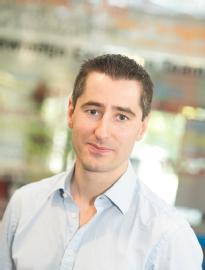 Dr Ed Brambley, from the University of Warwick, comments:
Dr Ed Brambley, from the University of Warwick, comments:
“Unlike existing computer simulations which work in all situations but are slow, my aim here is to take advantage of properties of particular metal forming processes, such as symmetry, or small parameters such as thin sheets, small deformations, and so on, and create bespoke simplified models specific to each of these processes.
“By accounting for these properties in a rigorous way, and using best practice mathematical techniques, I could produce quick-to-compute models with a guaranteeable accuracy. Such models would be exactly what is needed for online control of the metal forming process, and in the long term could create new products, reduce scrap, compensate for more variable materials such as recycled metals, reduce costs, and reduce energy usage.”
Not only will the funding help Dr Brambley’s research, it will also be used to support a post-doctoral researcher, and several PhD students from existing Warwick CDT’s will be involved in the research. Meaning Dr Brambley will be training a new generation of mathematicians and engineers to use these new mathematical modelling skills in industry.
ENDS
15 OCTOBER 2021
NOTES TO EDITORS
High-res images available at:
https://warwick.ac.uk/services/communications/medialibrary/images/september_2021/ring_rolling.jpg
Caption: Ring rolling metal forming
Credit: Hammerwerk Erft
https://warwick.ac.uk/services/communications/medialibrary/images/september_2021/ed_brambley.jpg
Caption: Dr Ed Brambley, WMG/Maths University of Warwick
Credit: WMG, University of Warwick
For further information please contact:
Alice Scott
Media Relations Manager – Science
University of Warwick
Tel: +44 (0) 7920 531 221
E-mail: alice.j.scott@warwick.ac.uk
Joint European effort boosts automated driving
- L3Pilot, Europe’s first comprehensive pilot test of automated driving on public roads demonstrates automated systems for cars in Hamburg, Germany, in conjunction with ITS World Congress 2021
- SAE Level 3 and 4 automated driving systems have been tested on ordinary roads in seven European countries, including cross-border activities, thanks to pan-European testing environments and methodologies that have been developed with help from WMG, University of Warwick
- A “Code of Practice” has been created to speed up and harmonise the development of automated driving systems as well as a framework for collection, storage and evaluation of large amounts of data
- Increased safety identified as main benefit of SAE Level 3 automated driving systems
From 11 to 15 October the European research project L3Pilot, which WMG at the University of WarwickLink opens in a new window has worked on, led by Volkswagen AG and co-funded by the European Commission, showcases automated driving functions in the City of Hamburg and on motorways nearby. The four-year project will now come to its successful end with performing its Final Event in conjunction with the ITS World Congress in Hamburg 2021.
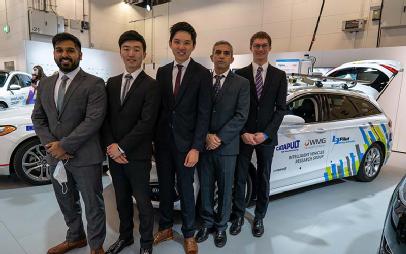 Running from 2017 to 2021, the project consortium brought together stakeholders from the whole value chain, including car manufacturers, suppliers, academia, research institutes, infrastructure and governmental agencies, user groups and the insurance sector.
Running from 2017 to 2021, the project consortium brought together stakeholders from the whole value chain, including car manufacturers, suppliers, academia, research institutes, infrastructure and governmental agencies, user groups and the insurance sector.
The experience of the partners in large-scale testing intelligent vehicle technologies made it possible to create a pan-European testing environment. The Code of Practice for the Development of Automated Driving Functions (CoP-ADF) is one of the major achievements of L3Pilot. It provides comprehensive guidelines for supporting the design, development, verification and validation of automated driving technologies.
Fourteen partners focused on testing automated driving functions in normal motorway driving, traffic jams, urban driving and parking. The pilots, running from April 2019 until February 2021, involved seven countries: Belgium, Germany, France, Italy, Luxemburg, Sweden and the United Kingdom and included two cross-border activities between Germany and Luxemburg as well as Germany, Belgium and the United Kingdom.
WMG, at the University of Warwick focussed on the development of a proof-of-concept prototype and a real-world demonstration of a cutting-edge technology for cooperative perception, using WMG’s state-of-the-art Open Innovation Vehicle Platform and mobile roadside units.
Aiming to enable safe automated driving at complex driving scenarios, such as roundabouts and T-junctions, the equipment was funded by the WMG Centre High Value Manufacturing (HVM) Catapult.Link opens in a new window Specialising in innovation aimed at making transport cleaner, safer and more efficient, the CentreLink opens in a new window works with UK manufacturing partners to develop automated, connected, electric and shared mobility for a sustainable future.
However WMG also contributed to a variety of key project activities including: Cyber Security Analysis of highly automated driving functions in highway environments, known as highway chauffeur, and the development of a Consolidated Database (CDB) to store large datasets acquired in the project during the experimental phase, which also included designing and implementing a web-based User Interface (UI) to provide access to CDB for L3pilot users, for example, partners and data analysts.
Prof. Mehrdad Dianati, from WMG at the University of Warwick comments:
“A major challenge for the safety of automated vehicles is how they will navigate through complex road segments, a part of our role in L3Pilot was to demonstrate how this challenge can be addressed using state-of-the-art cooperative automated driving technology we have developed at WMG.
L3Pilot Coordinator Aria Etemad, Volkswagen AG comments:
“Automated driving has a huge potential to make mobility safer, more efficient and more comfortable. The L3Pilot partners made great efforts to pursue piloting and met the project goals – despite the tremendous pandemic crisis. This shows the outstanding commitment of our Europe-wide partner network. One of our major achievements is a Code of Practice for the Development of Automated Driving Functions. It provides guidelines that will support the development of safe and reliable automated driving systems.”
 The project equipped 70 vehicles and the test fleet comprised 13 different vehicle brands, from a passenger car to a SUV. More than 400,000 kilometres were driven on motorways including 200,000 km in an automated mode and 200,000 km in a manual mode as a baseline for comparison of the user experience and evaluation of the impacts. More than 24,000 km were travelled in the automated mode in urban traffic. With the aim to put the focus on the user experience of automated driving functions, over 1,000 persons participated in piloting and complementary virtual environment tests.
The project equipped 70 vehicles and the test fleet comprised 13 different vehicle brands, from a passenger car to a SUV. More than 400,000 kilometres were driven on motorways including 200,000 km in an automated mode and 200,000 km in a manual mode as a baseline for comparison of the user experience and evaluation of the impacts. More than 24,000 km were travelled in the automated mode in urban traffic. With the aim to put the focus on the user experience of automated driving functions, over 1,000 persons participated in piloting and complementary virtual environment tests.
The project focused on SAE Level 3 automated driving functions on motorways and in urban traffic, while SAE Level 4 functions targeted exclusively parking and close-distance scenarios. The SAE Level 3 features Conditional Automation which requires the driver to respond appropriately to a request to take-over the vehicle control for manual driving. In case the driver is not responding properly to a take-over request, the vehicle performs an automatic minimum risk manoeuvre to safely stop the vehicle.
Moreover, L3Pilot carried out extensive supplementary tests to also research user experiences that were difficult to address in large-scale piloting due to safety requirements and legal issues. Therefore, supplementary studies were performed in addition to the on-road piloting to be able to study system usage and other relevant user experiences with ordinary, non-professional drivers in safe and virtual environments. The extensive studies comprised some 600 subjects.
Research evaluation results have shown that increased safety is the main benefit of SAE Level 3 automated driving systems. They also show that an automated driving system consisting of motorway, urban and parking functions for robust hands-off driving will generate a social benefit that is higher than the social costs of installing it.
L3Pilot paved the way for scaled-up driving tests with automated series vehicles in real-life traffic. This underscores the leadership of Europe's automotive industry in developing reliable, thoroughly tested and user-friendly technology.
ENDS
12 OCTOBER 2021
NOTES TO EDITORS
High-res images available at:
https://warwick.ac.uk/services/communications/medialibrary/images/september_2021/microsoftteams-image_5.png
Caption: WMG, at the University of Warwick demonstrating their technical achievement at ITS World Congress.
Credit: WMG, University of Warwick
https://warwick.ac.uk/services/communications/medialibrary/images/september_2021/microsoftteams-image_7.png
Caption: WMG, at the University of Warwick demonstrating their technical achievement at ITS World Congress.
Credit: WMG, University of Warwick
https://warwick.ac.uk/services/communications/medialibrary/images/september_2021/microsoftteams-image_8.png
Caption: WMG, at the University of Warwick demonstrating their technical achievement at ITS World Congress.
Credit: WMG, University of Warwick
https://warwick.ac.uk/services/communications/medialibrary/images/september_2021/microsoftteams-image_9.png
Caption: WMG, at the University of Warwick demonstrating their technical achievement at ITS World Congress.
Credit: WMG, University of Warwick
https://warwick.ac.uk/services/communications/medialibrary/images/september_2021/microsoftteams-image_10.png
Caption: WMG, at the University of Warwick demonstrating their technical achievement at ITS World Congress.
Credit: WMG, University of Warwick
Video available to view at:
https://www.youtube.com/watch?v=eJnzMGcr9Fc
Credit: WMG, University of Warwick
L3Pilot is an Innovation Action, co-funded by the European Union under the Horizon 2020 programme with the contract number 723051. Thirty four organisations have committed to scientifically test and assess the impact of automated driving systems on driver comfort, safety and traffic efficiency as part of the project.
www.l3pilot.eu
Twitter _L3Pilot_
LinkedIn: L3Pilot
Duration: 50 months, 1 September 2017 – 31 October 2021
Total cost: €68 million
EC contribution: €36 million
Coordinator: Volkswagen AG
Partners:
Automotive manufacturers: Volkswagen AG, AUDI AG, BMW Group, Stellantis | Centro Ricerche Fiat SCPA, Ford, Honda R&D Europe, Jaguar Land Rover, Mercedes-Benz AG, Adam Opel AG, Stellantis, Renault, Toyota Motor Europe, Volvo Car Corporation
Suppliers: Aptiv, FEV GmbH, Veoneer Sweden
Research: German Aerospace Center DLR; ika RWTH Aachen University; VTT Technical Research Centre of Finland; Chalmers tekniska hoegskola; SNF – Centre for Applied Research at NHH; University of Leeds; Institute of Communication and Computer Systems ICCS; Würzburg Institute for Traffic Sciences WIVW; University of Genoa; TNO – Netherlands Organisation for Applied Scientific Research; WMG, University of Warwick; European Center for Information and Communication Technologies – EICT GmbH
Authorities: Federal Highway Research Institute BASt; The Netherlands Vehicle Authority RDW
User Groups: Federation Internationale de l’Automobile FIA
Insurers: AZT Automotive GmbH, Swiss Reinsurance Company
SMEs: ADAS Management Consulting,
For further information please contact:
Alice Scott
Media Relations Manager – Science
University of Warwick
Tel: +44 (0) 7920 531 221
E-mail: alice.j.scott@warwick.ac.uk
Warwick student projects showcased at Our Future Moves
Students from across WMG and the School of Engineering have been showcasing their work at the Our Future Moves exhibition at the Coventry Transport Museum.
The exhibition is filled with contraptions, inventions, innovations and demonstrations showing the mechanisms and machinations of all things that move. The students have contributed several pieces to the exhibition that showcase their skills and imagination when it comes to futuristic transport.
Satellites
There are satellites from WUSat, the student team who are building nanosatellites to explore space and improve communications on earth. The students are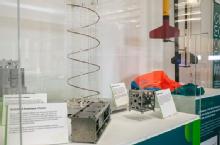 working on satellites that can orient themselves in space accurately enough to monitor wildlife populations on earth. Find out more here: OFM5: City Ecology // Our Environment — Culture Space Coventry
working on satellites that can orient themselves in space accurately enough to monitor wildlife populations on earth. Find out more here: OFM5: City Ecology // Our Environment — Culture Space Coventry
There are racing car components from Warwick Racing, the team that build a functioning electric race vehicle to compete in the Formula Student competition each year.
Submarines
The third student project on display is the Warwick Sub Team’s human-powered submarine. The students are tasked with designed and building the submarine to compete against other universities. The competition is usually held every-other-year at the US Naval Base in Cardarock, Maryland in the US, but due to the Covid19 pandemic it was held virtually this year. The students have won many accolades throughout the years. This year the team received Honourable Mentions’ in the ‘Manoeuvring and Control Subsystem Design Challenge’ and the ‘Thrust Production Subsystem Design Challenge’ categories.
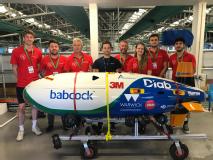 Sharing her experiences of the Warwick Sub team, Verena Oetzmann, Team Leader in 2016-2017, says: “In addition to all the challenges that we women in engineering face, being the female leader of an otherwise all male team was a demanding but very rewarding role. The lessons I have learnt throughout my time, coupled with the many skills procured along the way, have been invaluable as preparation for working life after university.
Sharing her experiences of the Warwick Sub team, Verena Oetzmann, Team Leader in 2016-2017, says: “In addition to all the challenges that we women in engineering face, being the female leader of an otherwise all male team was a demanding but very rewarding role. The lessons I have learnt throughout my time, coupled with the many skills procured along the way, have been invaluable as preparation for working life after university.
“Despite being the most difficult venture that I have undertaken at university, it is certainly among the most enjoyable, rewarding and memorable experiences I have ever had.”
Professor Ian Tuersley, Project Director for Warwick Sub, adds: “It is clear that our students who are fortunate enough to be involved in the International Submarine Race (ISR) competitions enjoy the experience immensely and value the additional benefits that these unique opportunities provide them.
“However, from the point of view of an educator, in addition to the excellent experience there is tangible empirical evidence that the requirements of the competitions – including the necessary enforcement of real-world deadlines and constraints focuses their work and personal development on areas that more traditional University learning is not easily able to deliver. Skills such as team-working, project management, problem solving, budgetary awareness and leadership are essential if success is to be achieved in the competitions – and these are exactly the skills and behaviours that are most highly valued by potential employers.”
The students involved in all these projects learn how to apply their knowledge and gain experience of a real project, run in an industrial style. They make fantastic role models for young people, including Jack Moore (a former Sub Team member) whose profile is also part of the exhibition.
Our Future Moves runs until 31st October at the Coventry Transport Museum, or explore the online exhibition here: https://transport-museum.com/events/1491/our_future_moves
Prof. Lord Bhattacharyya building shortlisted for RIBA Client of the Year 2021
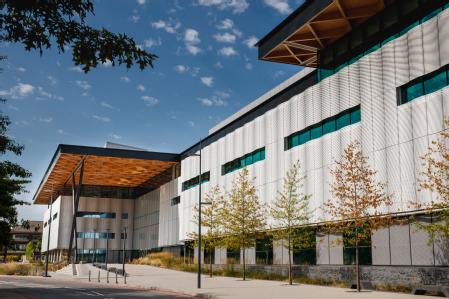 The Professor Lord Bhattacharyya building, home to NAIC (National Automotive Innovation Centre) at WMG, University of Warwick, has been shortlisted for a RIBA Client of the Year award, by The Royal Institute of British Architects.
The Professor Lord Bhattacharyya building, home to NAIC (National Automotive Innovation Centre) at WMG, University of Warwick, has been shortlisted for a RIBA Client of the Year award, by The Royal Institute of British Architects.
Following it’s 2021 RIBA regional and national award wins, the Centre has now been shortlisted for RIBA Client of the Year.
The NAIC is a partnership between WMG, University of Warwick, Jaguar Land Rover, and Tata Motors, and is the largest of its kind in Europe and is well timed, arriving when a global mobility revolution is underway, with a new age for transport mobility.
A beacon for automotive research it brings together the brightest minds from industry and academia, to develop future vehicles and mobility solutions. It is home to up to 1,000 staff working across design, engineering and research, as well as future engineers on degree programmes.
Designed by Cullinan Studios the brief for the Centre was for simplicity and strength of purpose, turning a complex assembly of spaces into an immediately legible building.
The NAIC is a £150m investment between WMG, Jaguar Land Rover, and Tata Motors with £29.5m funding from the UK government’s UK Research Partnership Investment Fund through Research England, which includes the development of an Advanced Propulsion Research Laboratory.
Coventry’s Affordable Very Light Rail Track Unveiled
§ As part of Coventry Very Light Rail (VLR), Coventry City Council’s flagship transport project, a novel track form has been designed and manufactured by researchers from WMG, University of Warwick, together with their design partners Ingerop/Rendel.
§ The track sits just 30cm into the road surfacing, whereas traditional tram tracks typically involve digging a metre down and moving utilities such as water, gas and electricity.
§ As a result of its shallow depth and ability to be embedded in an existing highway the cost is significantly lower.
§ The urban VLR track may cost as little as £10m per km to install, compared to traditional trams which cost upwards of £25m per km, sometimes as much as £100m per km in city centre locations, making urban rail a possibility for smaller towns and cities in the future.
Coventry Very Light Rail (VLR) took a major step forward on 24 September as Coventry City Council and WMG, University of Warwick showcased a breakthrough new track design which aims to drive down the costs associated with the installation of urban light rail.
Bringing together stakeholders from Coventry and across the West Midlands, engineers from WMG, University of Warwick provided further details on the Coventry VLR track form, which has been designed in partnership with Ingerop and its UK subsidiary Rendel.
At the University of Warwick’s ‘The Slate’ conference centre researchers from WMG, University of Warwick spoke about the engineering challenges that had been overcome in the design of the track form.
Councillor Jim O’Boyle, cabinet member for jobs, regeneration and climate change at Coventry City Council, spoke about the potential for Coventry Very Light Rail to transform public transport in Coventry and in smaller and medium sized towns and cities, enabling the next generation of clean, green transport.
WMG, University of Warwick and Ingerop have successfully created, designed and built the novel track form, designed to sit just 30 cm inside the road surface, making it easy to install and remove, significantly reducing the impact on utilities and potentially saving millions of pounds lost to excavation and moving gas, electrical and telecommunication systems. The new track is expected to cost as little as £10m per km compared to current tram tracks, which can cost upwards of £25m per km, and up to £100m per km in city centre locations.
The track form has been developed in parallel to a zero-emission, battery-powered lightweight shuttle vehicle developed in partnership with TDI, which will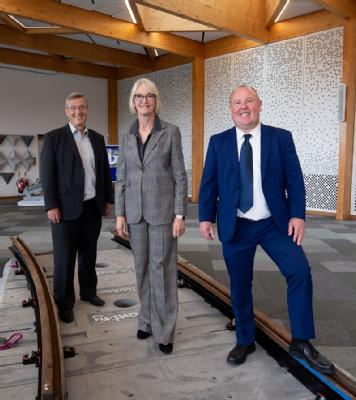 become autonomous, working like the London Underground system, where there is no timetable and passengers can hop on and off.
become autonomous, working like the London Underground system, where there is no timetable and passengers can hop on and off.
The vehicle is lightweight, and there will be no overhead power supply which is both costly and can have a negative impact to the city-scape.
Councillor Jim O’Boyle, cabinet member for jobs, regeneration and climate change, said:
”It’s incredible to see this one-of-a-kind, Coventry-led project move even closer to completion. Coventry Very Light Rail has the potential to provide Coventry, and towns and cities across the UK, with an affordable, high-quality transport mode using clean, green energy and it further cements our ambition to lead the green industrial revolution. Originated, designed and developed right here in Coventry it also has the potential to support new jobs in the future.
“This new track form, the first of its kind, is a critical part of the project and we would not be here today without the help of our incredible partners, some of the best engineering talent anywhere in the world, based right here in Coventry. I want to congratulate WMG and Ingerop on their success so far and I look forward to seeing the first tracks laid on our city’s streets.”
Dr Darren Hughes, Associate Professor at WMG, University of Warwick comments:
“The main driver of the Coventry VLR project was to make light rail as affordable and environmentally friendly as possible, and the track is the major part of this.
“Working with Ingerop we have successfully achieved this goal, making a unique track form using advanced materials and manufacturing processes which is not only affordable but also allows rapid installation, minimising disruption to local properties and businesses. The progress made is an excellent example of a city council, a university and an industry partner working together to solve a public transportation challenge.”
Margot James, Executive Chair at WMG, said:
“It is very exciting to see the latest development in the Coventry VLR project. The track technology is a world first, and reaching this milestone is a testament to the strength of the consortium and the hard work of all our partners. I am thrilled at the pivotal role WMG and the University of Warwick have played in this ground-breaking piece of work.”
Philippe-André Hanna, Director for Transportation at Ingerop added:
“We work all around the world on light rail schemes, in France, Spain, Africa and in the Americas and these have been very successful in bringing affordable public transport to urban areas. Light rail provides comfort, safety and frequent services, and has the potential to take people out of their cars, and reduce air pollution. We had been working over many years on how to optimise the depth of the trackform from the usual typical depth of 56cm one in order to reduce costs and to avoid having to divert any utilities.
“When we met WMG, University of Warwick and Coventry City Council, we were immediately struck by the potential to bring about a revolution in the light rail market and found the project extremely exciting. Together with WMG, and our UK subsidiary Rendel, a company active for more 175 years in the UK, we created a fully integrated team and found a true spirit of a collaboration within the whole group. This allowed us to create a great product, which is extremely innovative, and thanks to that we have succeeded to reach a new standard of a 30cm depth of trackform construction. Reducing the depth of excavation, and avoiding the diversion and impact on all utilities, we expect a much lower cost of construction than the usual light rail systems.
“We are looking forward to installing the first slabs in the road in Coventry and thereafter providing Coventry with a new innovative, cost effective, comfortable and regular public transportation system.”
Coventry VLR is being led by Coventry City Council and supported by a number of partners, including the Black Country Local Enterprise Partnership, Coventry and Warwickshire Local Enterprise Partnership, Dudley Metropolitan Borough Council and the European Regional Development Fund.
-ENDS-
27 SEPTEMBER 2021
NOTES TO EDITORS:
High-res images available here:
IMAGE 1 LANDSCAPE
CAPTION:
Pictured left to right: Margot James (Executive Chair, WMG), Stuart Croft (Vice Chancellor, University of Warwick and Councillor Jim O’Boyle (Cabinet Member for Jobs, Regeneration and Climate Change, Coventry City Council), stand on the new Coventry VLR track form.
IMAGE 2 PORTRAIT
CAPTION:
Pictured left to right: Stuart Croft (Vice Chancellor, University of Warwick) Margot James (Executive Chair, WMG), and Councillor Jim O’Boyle (Cabinet Member for Jobs, Regeneration and Climate Change, Coventry City Council), stand on the new Coventry VLR track form.
Credit: Coventry City Council
For further information on the track please contact:
Alice Scott
Media Relations Manager – Science
University of Warwick
Tel: +44 (0) 7920 531 221
E-mail: alice.j.scott@warwick.ac.uk
For further information on the Coventry VLR project please contact:
Liam Hughes
Assistant Communications Officer
(Very Light Rail and Our Future Moves)
Coventry City Council
Tel: +44 24 7538 1192
Email: liam.hughes@coventry.gov.uk
Better use of data in infrastructure project delivery could save £23bn a year
Better use of data in infrastructure project delivery could save the sector £23bn a year, according to a new study, by WMG, that looks at how companies can use project data analytics (PDA) to transform project delivery.
The study was undertaken by the Project Praxis Group, at WMG, led by Professor Naomi Brookes and in partnership with The Oakland Group.
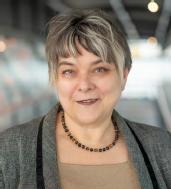 Professor of Complex Programme Management and leader of the Project Praxis research group at WMG, Professor Naomi Brookes explains: “PDA involves using data better to support decision-making in project delivery. Feasibility studies indicate that using PDA better could produce savings of over £23bn per annum in the infrastructure sector. Yet, PDA is still not understood or widely adopted. Our investigation explains why this might be the case and what can be done about it.”
Professor of Complex Programme Management and leader of the Project Praxis research group at WMG, Professor Naomi Brookes explains: “PDA involves using data better to support decision-making in project delivery. Feasibility studies indicate that using PDA better could produce savings of over £23bn per annum in the infrastructure sector. Yet, PDA is still not understood or widely adopted. Our investigation explains why this might be the case and what can be done about it.”
The investigation combined the viewpoints of senior practitioners in infrastructure delivery from clients, contractors and professional service organisations. Participants included; Transport for London, Network Rail, Severn Trent and Sellafield.
It provided a unique and invaluable insight into the barriers and enablers of PDA that are being experienced right now in infrastructure project delivery.
Surprisingly technology was not seen as the problem, and neither was a lack of data analysts in the project delivery profession. By far, the greatest concern was the quality of data used in delivering projects. Improving data maturity was seen as the most important enabler for infrastructure organisations to benefit from PDA.
Participants were also very honest about how fear of new technology can inhibit the way in which PDA is used. People in delivery organisations are concerned that PDA will provide another stick with which to beat them. The report contains a full description of all of the barriers encountered by infrastructure project delivery organisations and the enablers to overcome these.
Richard Corderoy, Managing Director at The Oakland Group, said: “Our work with companies across the construction and utility sectors shows that integrating data insight and decision making into daily operations can be transformational. Organisations are often awash with data and just need help to access it in a way that can drive insight and change.
“Our support of the work with WMG highlights the pressing need to adopt data analytics into project planning and delivery. The savings highlighted in the report are significant and just the tip of the iceberg when you consider the wider economy.”
Ends
Notes to editors:
The Project Praxis Research Group in WMG, University of Warwick (www.warwick.ac.UK/fac/sci/wmg/research/transformation/project_praxis/) is a unique research groups specialising in the creation of ‘oven-ready’ new knowledge on complex project delivery that can be immediately adopted by practitioners to improve performance.
The Oakland Group (www.theoaklandgroup.co.uk/) is a Leeds-based full-service data consultancy operating at the intersection of process, analytics, and governance. Working with data, IT, and business leaders from VC backed start-ups to some of the UK’s most influential organisations.
For more information contact Nathan Lane on 07447 921654.
Pioneering industry collaboration accelerates hydrogen refuelling innovation for HGVs
WMG is working with Midlands-based SME Hy-Met Limited and Logan Energy to deliver the Hydrogen Prototype Equipment for Refuelling (HyPER) project.
Together, the consortium will develop a next-generation hydrogen flowmeter for refuelling Heavy Goods Vehicles (HGVs). These will be used for hydrogen refuelling systems, and will be lightweight, smaller, more cost effective and more accurate than existing instruments.
refuelling systems, and will be lightweight, smaller, more cost effective and more accurate than existing instruments.
This follows recent funding from the UK Government’s Department of Transport zero emission road freight trials through Innovate UK. The project value totals around £170,000.
The new meter will also be easier to manufacture and maintain than current options on the market.
The project aims to reduce the cost of hydrogen refuelling and enable the wider adoption of hydrogen by transport fleets and other users.
Nishal Ramadas, co-founder and CEO of Hy-Met, said: “Since launching Hy-Met in January, we’ve been motoring ahead with our plans to help with the transition to net zero. With our innovative measurement platform, Hy-Met is combining our deep hardware and software expertise to tackle some of the complex measurement challenges facing the hydrogen sector.
“When building the consortium, we knew we needed partners with detailed knowledge of the requirements for hydrogen refuelling and advanced manufacturing and prototyping capabilities.
“Our choice of project partners was clear and we are very happy Logan Energy and WMG have joined us in tackling this refuelling challenge.”
Bill Ireland, Chief Executive at Logan Energy, said: “Using hydrogen to power lorries is one of the key steps towards helping Scotland and the UK tackle the climate emergency.
“Making the switch from burning diesel to using hydrogen will cut the amount of carbon dioxide and other harmful gases being pumped into the atmosphere.
“There are a number of advancements we need to take before hydrogen becomes commonplace on our roads and one of the crucial elements is making it cheap and easy to refuel.
“For nearly three decades Logan Energy has been at the forefront of developing new and innovative hydrogen technologies both here in the UK and abroad. This collaborative partnership with Hy-Met and WMG is another step towards helping the UK grow its capabilities within the hydrogen industry and the drive to net-zero.”
Dmitry Isakov, Assistant Professor at WMG, said: “Securing this funding from the Department of Transport through Innovate UK will help us to accelerate our work. Working alongside Logan Energy and Hy-Met will allow us all to combine our knowledge and expertise to develop an industry-leading hydrogen flowmeter.”
Lord Bhattacharyya Award winner announced
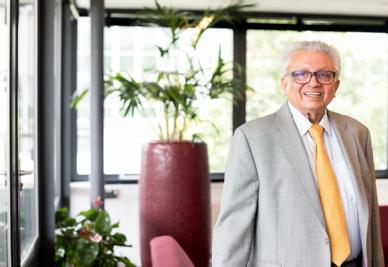 The Royal Academy of Engineering and WMG, at the University of Warwick, have announced the University of Surrey’s 5G Innovation Centre (5GIC) as the first ever winner of the Bhattacharyya Award.
The Royal Academy of Engineering and WMG, at the University of Warwick, have announced the University of Surrey’s 5G Innovation Centre (5GIC) as the first ever winner of the Bhattacharyya Award.
The Award, which carries a £25,000 prize, has been presented in recognition of an exemplary academia-industry partnership that has helped to build the UK’s work in 5G technology from the ground up, and produced world-leading innovation in the field.
The Bhattacharyya Award is funded by the Department for Business, Energy and Industrial Strategy and was created to encourage more private and academic entities to collaborate, as a tribute to the late Professor Lord Kumar Bhattacharyya KT CBE FREng FRS, Regius Professor of Manufacturing at the University of Warwick and founder of WMG.
Margot James, Executive Chair at WMG, University of Warwick, said: “This partnership exemplifies innovative academia-industry collaboration, for which Professor Lord Bhattacharyya was a keen advocate. He believed in effective industrial strategy, with a focus on the impact of research and training and technology partnerships between industry and universities. This inaugural Lord Bhattacharyya Award will inspire the next generation of academics and industry experts to come together to create more ground-breaking research.”
Surrey’s 5GIC has built collaborations with more than 27 global industrial partners and over 300 UK SMEs since its launch in 2013, bringing together leading academics and companies to help develop the 5G infrastructure that will underpin the way we communicate, work and live our everyday lives. 5G technology is estimated to be worth up to £173 billion to the UK economy by 2030, increasing productivity, driving modernisation and enabling transformative applications in automation, healthcare, manufacturing, self-driving vehicles, and remote robotics. Its evolution to 6G is set to address grand societal and industrial challenges, such as the digital divide, and privacy, as well as support efforts towards achieving the net-zero national agenda.
Regius Professor Rahim Tafazolli, Head of the Institute for Communication Systems (ICS) at the University of Surrey and Founder and Director of the 5GIC, said: “Collaboration with industry partners is at the heart of our achievements. The challenge of 5G could not be met without the close cooperation of major businesses with academia, and realising the benefits of the new technology by reaching out to regional communities and SMEs.
“We will use the Bhattacharyya Award funding to expand our overseas relationships – particularly with South Korea and Japan – and maintain our international profile. We will also use the prize to provide collaborative industry opportunities for training, knowledge exchange, and skills development for early careers researchers. All of these activities will be co-developed with industry to ensure that they meet the future needs of the UK and global workforce. We feel that this boost to skills development is particularly important to help offset the disruption caused by the pandemic.”
Science Minister Amanda Solloway said: “I am delighted to see the first Bhattacharya Award go to the University of Surrey’s 5G Innovation Centre (5GIC), whose work to bolster the UK’s competitiveness in 5G technology has already helped to attract nearly £100m of industry funding.
“5GIC puts collaboration between industry and academia at the core of its work, and I hope this award inspires other researchers, academics and industry experts to join forces as part of our efforts to build back better from the pandemic.”
Professor Dame Ann Dowling OM DBE FREng FRS, immediate past-President of the Royal Academy of Engineering, is chair of the judging panel for the Bhattacharyya Award. She said: “Had companies been working individually and with more limited collaboration with academia, these outputs and outcomes would have taken far longer to achieve. The collaborative work at 5GIC is enabling the UK to be a leader in the international competition. The Bhattacharyya Award aims to transform how universities research and educate to meet the needs of industry and society, which is exactly what the University of Surrey’s 5GIC has done, and we congratulate the team for setting such a high bar in this first cycle of the Award.”

